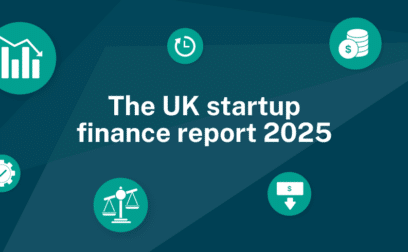Starting a non-profit organisation in the UK can offer many rewards for those with a philanthropic mindset — including enhanced credibility, better access to donors, and greater opportunities to apply for grants and funding.
However, because charities and non-profits must follow strict regulations, maintain detailed records, and are subject to oversight by the Charity Commission and HMRC, this route isn’t right for everyone. Read on to find out whether starting a non-profit is suitable for you — and what it takes to set one up in the UK.
What is a non-profit?
A non-profit is an organization that operates for a charitable, educational, scientific, religious, or public service purpose rather than for profit. These types of organization are exempt from federal income tax provided they meet certain requirements. Non-profits can generate revenue, but profits must be reinvested in the organization’s mission rather than distributed to owners or shareholders. Non-profits rely on donations, grants, and volunteers to support their activities and often provide essential services, advocate for causes, or support community development. Examples include charities, educational institutions, and foundations.
Can my non-profit pay me a salary?
Yes. It’s perfectly legal for non-profit organisations in the UK to pay their staff. However, any salaries must be reasonable and in line with the work being done. Trustees cannot receive payment for their role unless explicitly allowed by the Charity Commission or the organisation’s governing documents, and no one should be paid an amount that could be considered excessive.
Is a nonprofit right for me?
Launching a non-profit organisation in the UK can offer several advantages — such as eligibility for donations, access to grants, and certain tax reliefs. However, to maintain charitable or non-profit status, you must comply with strict regulations set by the Charity Commission and HMRC. Profits must be reinvested into the organisation rather than distributed among its founders or members. These restrictions mean that a non-profit structure isn’t suitable for everyone — some entrepreneurs may find that setting up a limited company or social enterprise is a better fit.
There are several types of non-profit organisations in the UK, but most fall into one of the following categories:
Charitable Incorporated Organisations (CIOs): Registered with the Charity Commission, CIOs have a separate legal identity and limited liability for their trustees.
Charitable Companies (Limited by Guarantee): These are registered with both Companies House and the Charity Commission and are often used for larger charities or those entering contracts and employing staff.
Community Interest Companies (CICs): Designed for social enterprises that want to use their profits for public good rather than private gain. CICs are regulated by the Office of the Regulator of Community Interest Companies.
Unincorporated Associations and Trusts: Usually smaller community or volunteer-led organisations that operate without formal incorporation but still pursue charitable or social aims.
5 Steps to start a non-profit organization
Is a non-profit what you need? Follow these steps to get started:
Even if you don’t need investment or a loan, a business plan can still be a very useful vital tool. Use it as your business manual, referring to the contents to guide your strategy and manage your financials.
Find out more about creating your business plan here.
Step 1. Research feasibility and need
Before committing to starting a non-profit, it’s crucial to determine if it’s feasible and if your mission addresses a genuine community need. Launching a non-profit without proper assessment can lead to rapid failure.
To evaluate the feasibility of your idea, answer these questions:
- Financial resources: Can you afford the initial costs, which range from £2,500 to £5,000 for legal expenses, entity registration, and business setup?
- Team readiness: Do you have enough people to establish a board of directors and enough volunteers or staff to launch and sustain your programs? List potential team members and their skills, noting any skill gaps to address.
- Community support: Is there enthusiasm for your cause? Without community backing, securing donations will be challenging.
- Economic conditions: Can your community financially support a new non-profit? If people in your local area are struggling, it’s unlikely they’ll be able to contribute to your cause.
- Personal commitment: Can you dedicate the necessary time and effort? Non-profits require substantial, often full-time commitment from their founders.
- Strengths, weaknesses, opportunities and threats analysis: Assess internal and external factors, such as skill gaps, potential partnerships, donor reliability, your experience, and how you compare to competitors. Will your organization have all the attributes required to meet its objectives?
To gauge the need for your non-profit, ask:
- Unmet needs: Does your mission address a truly unmet need, rather than a want? If not, donor funds might go to organizations meeting more critical needs.
- Competition: Identify existing organizations addressing similar needs using a non-profit locator tool. If another organization already serves your target area, you’ll be competing for limited resources.
- Unique value proposition: How does your service differ from your competitors? If a similar mission exists, consider adjusting your focus to cover unmet needs or addressing different recipients.
After assessing feasibility and need, decide whether to proceed to step two, which involves investing resources. If your initiative isn’t feasible or necessary, consider supporting your cause through other means, such as fundraising for an existing non-profit.
Step 2. Build a strong foundation
To start your non-profit, you’ll need to select your organization’s name, recruit your board of directors, and write your values, mission, and purpose statements:
- Write your Values Statement: Your Values Statement defines the principles guiding your organization throughout its development and in every future decision made by staff, executives, board members, and volunteers. Start by listing the behaviors crucial for successfully and ethically fulfilling your mission – such as ‘never cause harm’. Then, describe how these behaviors will be implemented in daily operations across all levels of your organization.
- Write your Mission Statement: A Mission Statement keeps your team focused and driven. It should describe what you do, how you do it, and why you do it. Craft your statement by answering, in one sentence, what services you provide, integrating your organization’s core values, and stating the desired outcome of your mission.
- Write your Purpose Statement: Your Purpose Statement justifies the necessity of your non-profit despite existing competitors. It communicates to donors and partners why they should support your organization. Describe your non-profit’s activities, starting with the category of service (e.g., educational, humanitarian). Elaborate on your services and explain how they differ from competitors, providing a clear, compelling picture while leaving room for future growth.
- Choose your non-profit’s name: Select a name that aligns with the emotions created by your values, purpose, and mission statements. Consider the service category your organization belongs to and choose descriptive words that reflect your mission. Ensure the name is concise, easy to write, say and remember, and suitable for domain names and social media handles. Verify that your chosen name isn’t already taken by searching tools like GoDaddy’s domain search and checking with your state’s business filing agency. Additionally, use online services like Legal Zoom’s trademark check to confirm it’s not trademarked.
- Select Your Board of Directors: List the skills and expertise needed to achieve your mission, such as financial, marketing, legal, and industry-specific knowledge. Identify individuals with these qualifications who also share an interest in your cause. Contact them to discuss their involvement. (It may be best to assess their suitability for board positions by having them volunteer before committing to a board role).
Step 3. File articles of incorporation
When you register your non-profit organisation, you’re applying for official recognition as a legal entity. Approval means your organisation is formally established, but it does not automatically qualify for charitable or tax-exempt status.
To register your non-profit in the UK, you’ll need to apply through Companies House if you’re forming a charitable company or the Charity Commission if you’re setting up a charity. You’ll be required to provide your governing documents (such as your constitution or articles of association) and pay any applicable registration fees.
You’ll also need to register with HMRC to obtain a Unique Taxpayer Reference (UTR) and, if applicable, apply for charitable tax reliefs. This tax ID is essential for managing your organisation’s finances, filing returns, and receiving donations or grants.
Step 4. File for tax-exempt status
The process for gaining charitable or tax-exempt status in the UK depends on the type of organisation you’re setting up.
The most common form is a registered charity. To achieve charitable status, you must apply to the Charity Commission for England and Wales (or the relevant body in Scotland or Northern Ireland). Your organisation must meet the Commission’s criteria, including:
Having exclusively charitable purposes that benefit the public
Holding assets and income above £5,000 (unless registering as a CIO)
Being governed by a suitable constitution or articles of association
Operating independently and not for private profit
If you’re setting up a Community Interest Company (CIC) instead, you’ll need to register through Companies House and submit a Community Interest Statement (Form CIC36) explaining your social purpose and how your activities will benefit the community.
Once registered, charities can apply to HMRC for charitable tax reliefs, which provide exemption from corporation tax on most types of income and gains, as well as eligibility for Gift Aid on donations.
Step 5. Maintain your tax-exempt status
Maintaining your charitable or tax-exempt status in the UK isn’t a case of “register once and forget.” It’s an ongoing process that requires careful governance, accurate record-keeping, and compliance with Charity Commission and HMRC regulations.
Here’s a checklist to help you maintain your charity or non-profit status over the long term:
Follow your governing document: Your constitution or articles of association set out how your organisation must operate — including trustee meetings, conflict of interest procedures, and the management of charitable funds.
Keep detailed financial records: Maintain accurate records of income, expenditure, grants, donations, and bank transactions. Demonstrating that funds are used for charitable purposes is essential for retaining charitable status and public trust.
Submit annual returns and accounts: All registered charities must file annual returns and financial statements with the Charity Commission. Smaller charities may be able to file simplified accounts, depending on their income level.
Report to HMRC: If your charity is recognised for tax purposes, ensure you submit the necessary updates to HMRC, especially if your income, activities, or structure changes.
Stay compliant with regulations: Keep your details with the Charity Commission and Companies House (if applicable) up to date, and review your governing policies regularly to ensure continued compliance.
How quickly can I start a non-profit?
It depends on how quickly you move. The faster you complete the initial steps — such as drafting your governing documents and registering your organisation — the sooner you can apply for charitable or tax-exempt status.
However, once you’ve submitted your application to the Charity Commission (or Companies House, if applicable), the review process can take time. If your documentation is thorough and meets all requirements, approval might take just a few weeks — but more complex cases or incomplete applications can take several months for the Commission to review and request further information.
Can I start a non-profit by myself?
Yes. You can launch a non-profit on your own and doing so can give you full control over the direction of the organization and appointing and removing board members. However, board members are still required for running a non-profit, which means you cannot operate the organization with just one person.
Can I start a non-profit with no money?
Yes. You can start a nonprofit with no money by tapping into a fiscal sponsorship. In a fiscal sponsorship, another entity – the fiscal sponsor – is financially liable for the non-profit initiative but the organization being sponsored retains its own tax liability. Because the non-profit is funded via a grant or grants from the fiscal sponsor, it does not need any funds when it is started.
Can non-profits take out business loans?
Yes. Like for-profit businesses, non-profits can borrow money to help finance their operations. To obtain a loan, non-profits can approach banks, credit unions and online lenders one by one, or they can use the services of a loan marketplace that will immediately introduce them to a choice of business loans from different lenders. Some marketplace platforms can also provide advice and help with the application process. This can be especially useful for non-profit founders who have never taken out a business loan before.
Common business loans for non-profits:
- Term loan – this is a lump sum that you pay back over time. Borrow up to £5million over as long as 25 years. Collateral may be required.
- Business line of credit – a loan that functions like a high-value credit card. Withdraw cash anytime up to the maximum of your credit limit. You only pay interest on the sum you withdraw, not the whole line. This can significantly reduce your borrowing costs. Collateral may be required.
- Equipment loans use the asset you’re financing as security, similar to a car loan or a residential mortgage, so no added collateral is required. Buy machinery, furniture, technology, etc. Use the equipment as you pay for it.
Get started with Swoop's business funding platform
Starting a non-profit can be exciting, fulfilling and a lot of fun, but you’ll need cash to realize your dreams and donations may not be enough. Funding is where Swoop can really help non-profit organisations. No matter if you’re launching a brand-new non-profit, or you’re an established entity, chances are you’ll need extra finance to make your operation grow. Many types of business loan are suitable for non-profits, but working with finance experts can make all the difference when applying for funding. Contact us to discuss your borrowing needs, get help with loan applications and to compare high-quality business loans from a choice of lenders. Put your non-profit firmly on the map. Register with Swoop today.









































 yet? Register here!
yet? Register here!